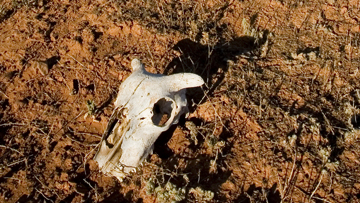You have free articles remaining this month.
Subscribe to the RP Witness for full access to new articles and the complete archives.
Metaphors are implied comparisons. When Jesus says, “I am the true vine,” He compares Himself to a fruit-bearing plant (John 15:1). Jesus then extends the metaphor, and extended metaphors are called allegories. “I am the true vine, and My Father is the vinedresser. Every branch in Me that does not bear fruit, He takes away; and every branch that bears fruit, He prunes it so that it may bear more fruit” (vv. 1-2).
Note the metaphors. Jesus is a vine. The Father is the vinedresser. We are branches. The branches of the vine are judged according to their ability to bear fruit. Those not bearing fruit are cut off. Those bearing fruit are pruned. This allegory is a story that cannot actually take place. Jesus is not actually a vine. His Father is not actually a vinedresser. But we get the point of the story because we understand the implied comparisons.
Metaphors, allegories, and symbols are in the same family. As implied comparisons, symbols also represent something different than themselves. Symbols are not the reality; they portray reality. For example, John sees a vision of Jesus standing among seven golden lampstands holding seven stars (Rev. 1:12, 16). “The seven stars are the angels of the seven churches, and the seven lampstands are the seven churches” (v. 20). Note the metaphors. The stars are messengers. The lampstands are churches.
Revelation 12:3 pictures “a great red dragon having seven heads and ten horns, and on his heads were seven diadems.” The dragon is “the serpent of old who is called the devil and Satan” (v. 9). This symbol portrays the devil, who fights against the church today, but who also tempted Eve in the garden. Symbols portray something different from themselves, past, present, or future.
Because symbols portray something different from themselves, there is consistency in their use. Daniel reports, “I was looking in my vision by night, and behold, the four winds of heaven were stirring up the great sea. And four great beasts were coming up from the sea, different from one another” (Dan. 7:2-3). Who or what are these beasts? Daniel 7 verses 17 and 23 answer. “These great beasts, which are four in number, are four kings who will arise from the earth.…The fourth beast will be a fourth kingdom on the earth.” These beasts are earthly kings representing earthly kingdoms.
Revelation 13:1-2 is similar. “And the dragon stood on the sand of the seashore [the dragon is the devil]. Then I saw a beast coming up out of the sea [remember Daniel 7], having ten horns and seven heads, and on his horns were ten diadems, and on his heads were blasphemous names.” This beast also portrays earthly kingdoms and earthly power derived from the devil.
Here is another example. “The hand of the Lord was upon me, and He brought me out by the Spirit of the Lord and set me down in the middle of the valley; and it was full of bones” (Ezek. 37:1). What is the meaning of the valley of dry bones? Verse 11 answers, “Son of man, these bones are the whole house of Israel; behold, they say, ‘Our bones are dried up and our hope has perished. We are completely cut off.’” Note the metaphor; the host of dry bones is Israel. The vision of Ezekiel 37:1-14 portrays Israel’s captivity and deliverance.
Remember, metaphors, allegories, and symbols are implied comparisons. Symbols are not the reality; they portray reality. Learning to interpret biblical symbols helps you to interpret Scripture and to live by Scripture.
—Dennis J. Prutow
